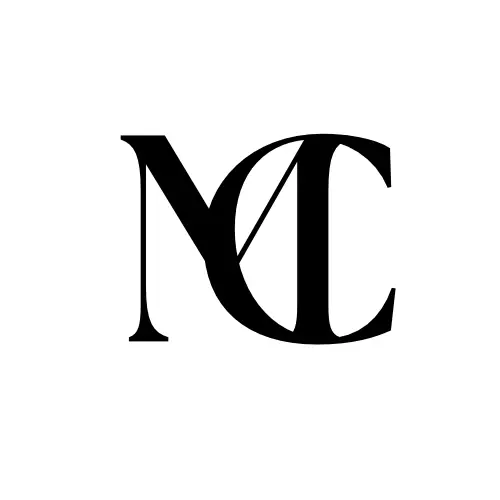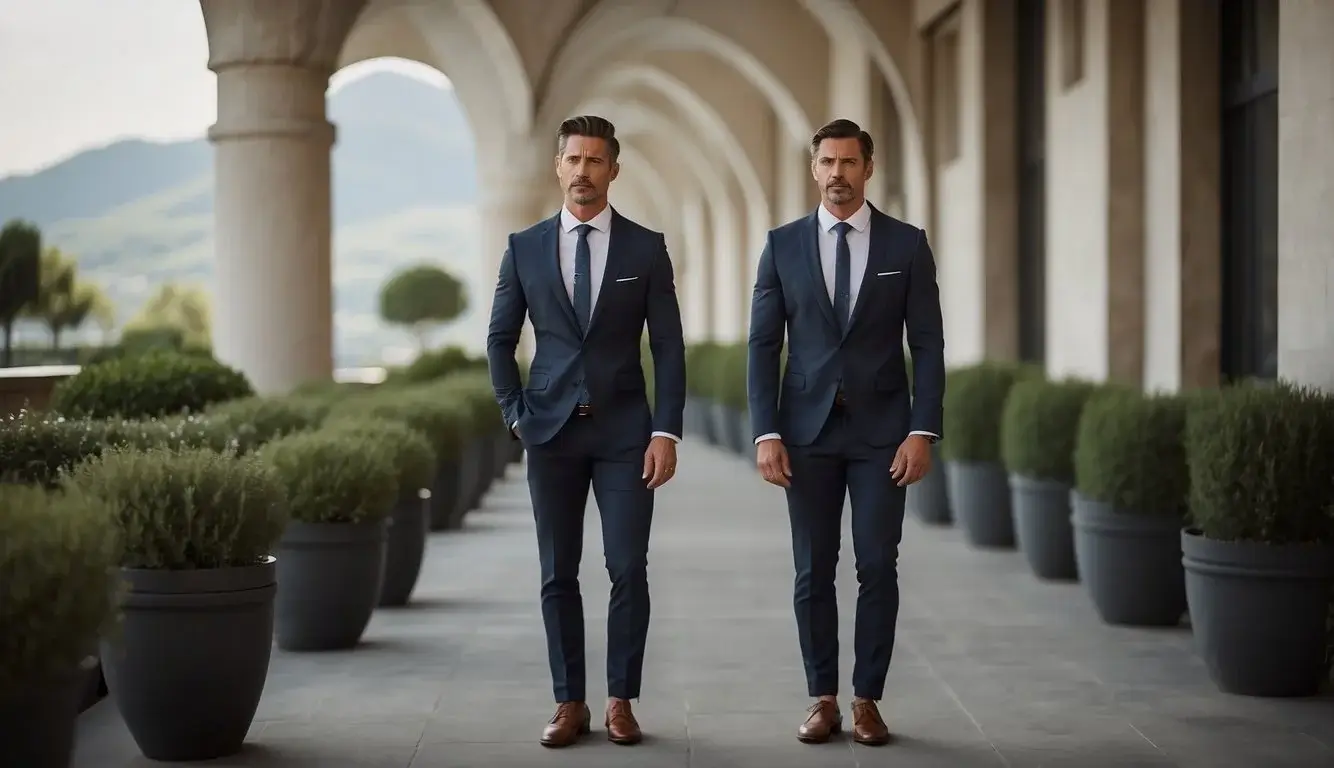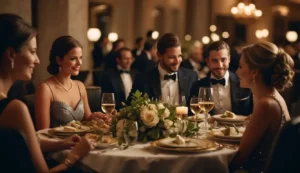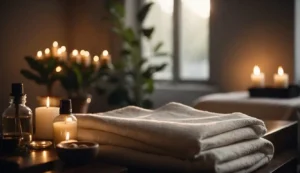Diving into the world of suit etiquette has proven to be an insightful journey, revealing that donning a suit transcends mere appearance. It’s about cultivating an aura of refinement and proficiency, where each element, from the fabric to the cut, contributes a meaningful message.
My exploration into this realm has taught me that the right suit not only enhances one’s presence but also pays homage to the occasion it graces. Whether stepping into a boardroom or attending a gala, the intricacies of suit selection, pairing, and care are pivotal in ensuring that every ensemble reflects meticulous taste and respect for the event at hand.
Key Takeaways
- The right suit choice and fitting are crucial for a polished appearance.
- Attention to detail in dressing affects the overall suit presentation.
- Proper suit maintenance is essential for longevity and impression.
Choosing the Right Suit
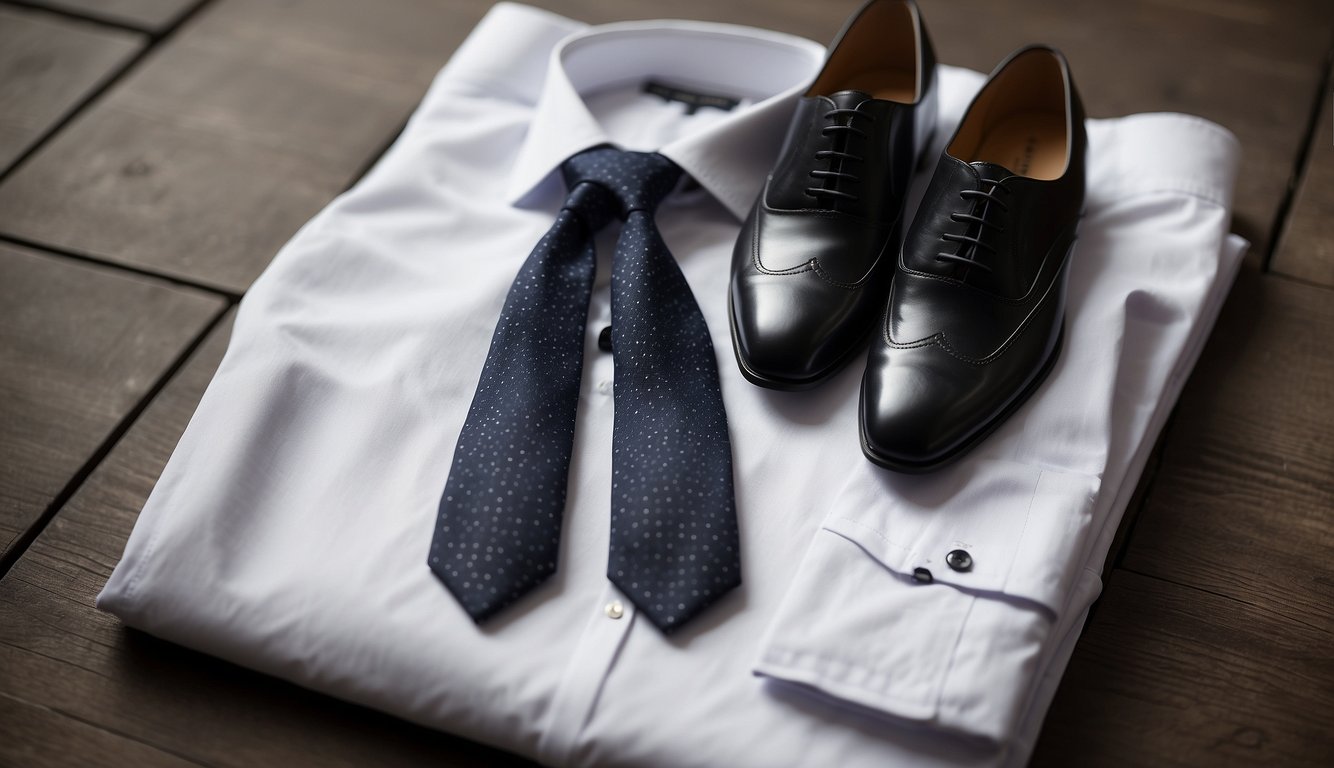
In this section, we’ll discuss the essentials of selecting a suit that not only looks sharp but also feels comfortable and fits the occasion perfectly.
Understanding Suit Styles
Knowing my suit styles makes a huge difference in the selection process. Traditional suit styles include single-breasted suits, which are versatile for many occasions, and double-breasted suits, offering a more formal appearance. A well-fitted suit, whether it’s a classic navy suit, a sophisticated gray suit, or a bold black suit, can be a game-changer in menswear.
Suit Fit and Tailoring
My personal mantra is that fit is everything. With the right tailoring, an off-the-rack suit can look custom-made. Key aspects to check for a good fit include the shoulder seam resting at the end of the shoulder bone and the jacket closing without strain. Don’t hesitate to visit a tailor to adjust your suit; it can make all the difference between a decent and a perfectly tailored suit.
Selecting Suit Color and Fabric
They say colors and fabric can speak before I even say a word, so I choose carefully. For versatility, I lean towards a navy or gray suit, but for more distinct occasions, I might opt for a brown suit or even one with a unique houndstooth pattern. When it comes to fabric, wool suits are my go-to as they’re durable and work in most climates. Selecting the right color and fabric can reflect my personal style while maintaining a professional edge.
Getting Dressed

When I pick out a new suit, every layer and accessory is an opportunity to refine my look. From the dress shirt to the vest, each element contributes to creating a polished ensemble.
Layering with Shirts and Vests
For my base, I always start with a crisp dress shirt. I ensure it’s well-ironed and fits perfectly, with collar points neatly tucked beneath the lapel of my jacket. If I’m adding a vest, it needs to follow suit—no pun intended—with a snug fit that leaves just enough room for comfort without looking bulky. It’s essential that the bottom of the vest covers the waistband and that the shirt does not puff out from beneath the vest.
The Role of Accessories
Accessories are where I can show my personality. Ties or bow ties add a splash of color or pattern to my look, and I always ensure the tie length meets the belt line. A tie bar or tie clip keeps my tie in place and adds a subtle detail of style. Cufflinks are a must-have for my sleeves, offering both function and elegance. On my lapel, I may pin a simple lapel pin or a classic boutonniere if the occasion is more formal.
The pocket square is the final flourish, and I fold it with care so that it complements, not competes with, my tie. My wrist isn’t forgotten – a dress watch is functional yet sophisticated, completing my outfit. If I opt for an undershirt, I ensure it’s invisible beneath my dress shirt to maintain a sleek profile.
Suit Jacket Details
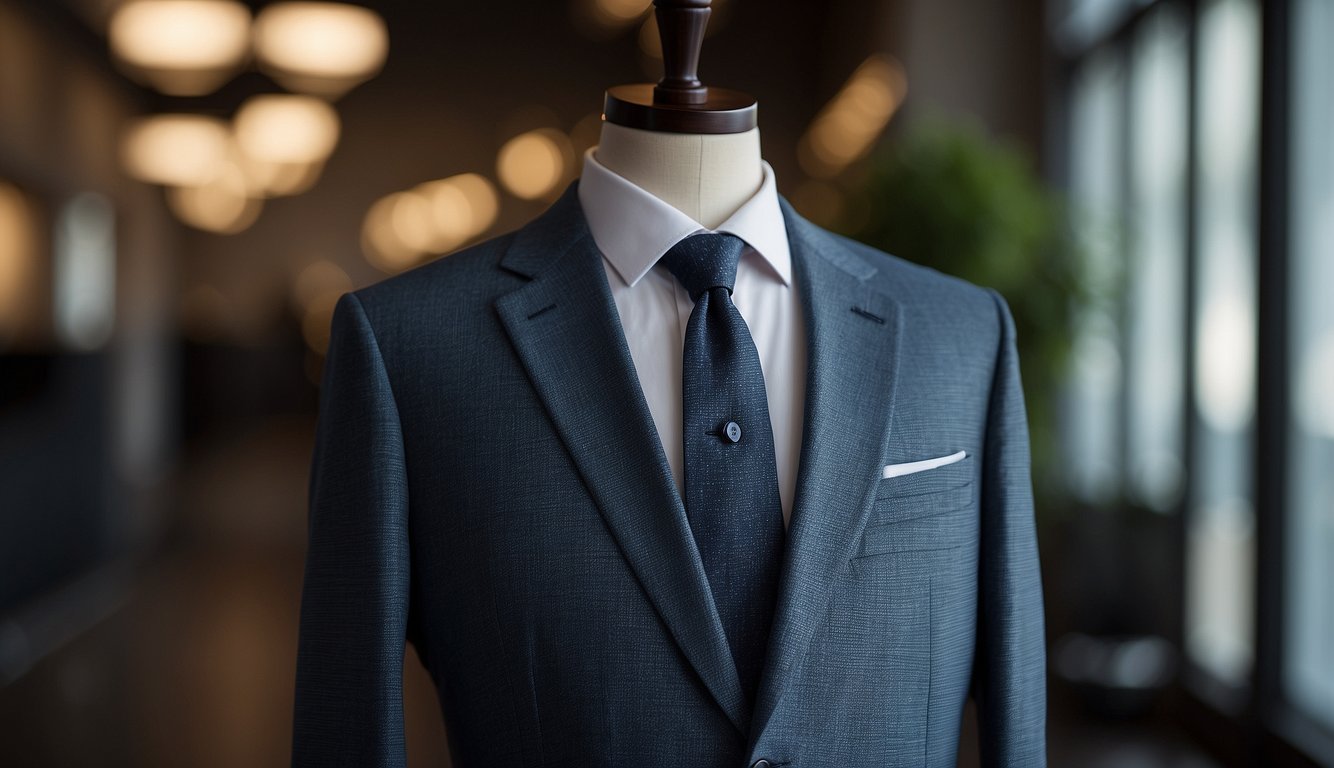
When choosing a suit jacket, the subtle details can make a significant difference. I’ll guide you through the importance of proper fitting and buttoning, as well as choosing the right lapel types and vents for your jacket.
Jacket Fitting and Buttoning
Shoulder Fit: My jacket’s shoulders must lie flat. The shoulder pads should end with my shoulders, ensuring a structured but not overly broad silhouette.
- Correct Size: If the seams sit past my shoulders, my jacket is too large. Conversely, if they feel restrictive, it’s too small.
- Length: Ideally, the jacket should end around my hip bones. It should not be too long nor should it expose my seat.
Buttoning Rules: Buttoning my jacket correctly is key for a polished look. Here’s a quick rundown:
- One-Button Jacket: The sole button should always be fastened when standing and unbuttoned when sitting.
- Two-Button Jacket: The top button should remain buttoned, while the bottom one should always be left undone.
- Three-Button Jacket: Here’s a simple rule of thumb – “Sometimes, Always, Never” from top to bottom.
The Fitted Look: A well-fitted jacket accentuates my form without restricting movement. The waist should gently taper to define my torso, but not be too tight.
Lapel Types and Vents
Lapel Varieties:
- Notch Lapel: The most common type, characterized by a notch where the lapel meets the collar. Perfect for business and versatile wear.
- Peak Lapel: More formal, with edges that peak upwards. Ideal for double-breasted jackets or formal events.
Vent Options:
- Single Vent: A single cut commonly seen in American tailoring, providing ease of movement.
- Double or Side Vents: More stylized, these are popular in European tailoring and offer better shape and function as they frame my back elegantly.
Remember, choosing the correct lapel and vent style will affect not only my jacket’s overall appearance but also how comfortably it fits and moves with me.
Pants and Shoes
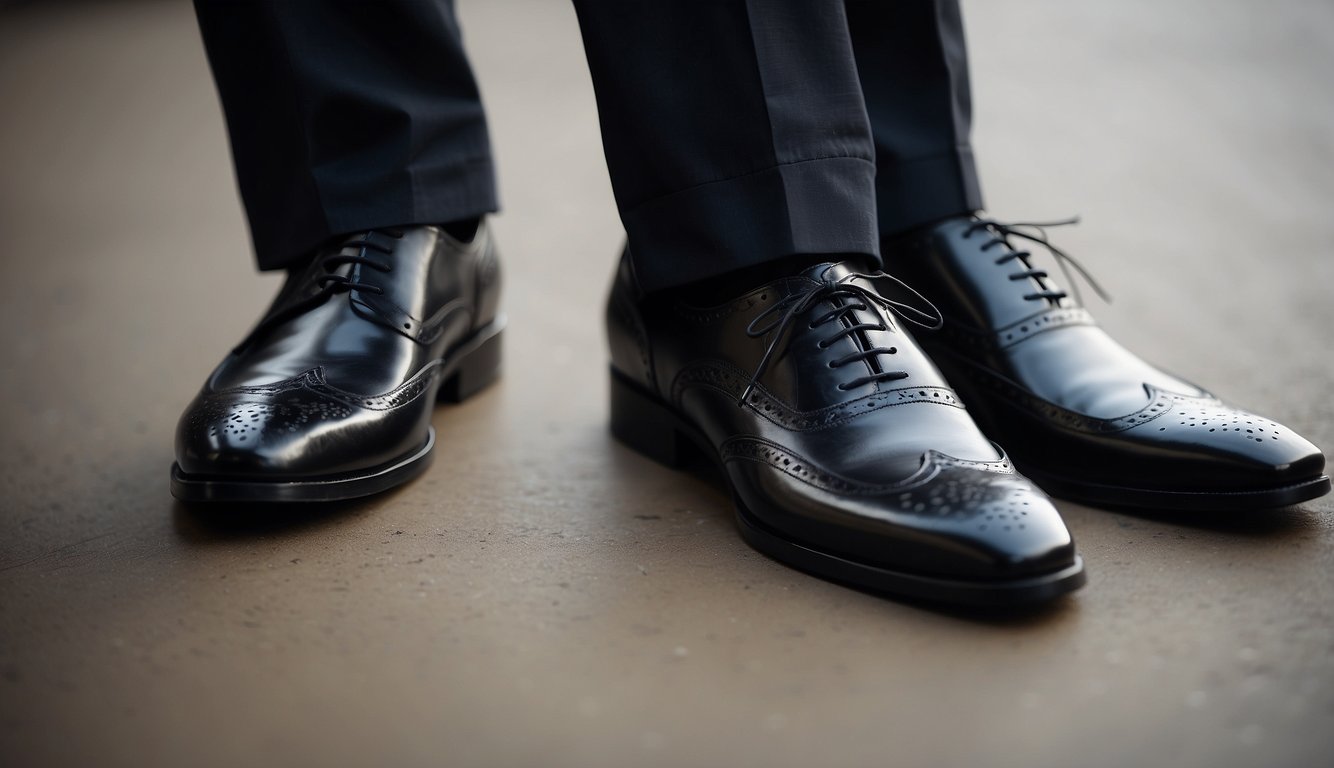
In my experience wearing suits, I’ve found that the details make all the difference, especially when it comes to the length of my pants and the choice of shoes.
Pants Length and Break
I always pay close attention to the hem of my suit pants, as it directly influences the look and style. Ideally, the pants should have a slight break—or a subtle crease caused by the pant hem hitting the top of the shoes. The amount of break can vary according to personal taste, but there are a couple of common preferences:
- Full Break: If I prefer a more classic and conservative look, I tend to go for a full break, where the hem rests generously on top of the shoes creating a noticeable fold.
- No Break: For a modern, sleek appearance, no break is my go-to, where the hem barely touches the top of the shoes, or sometimes even sits a bit above them.
Choosing the Right Shoes
I consider style and comfort when selecting dress shoes to pair with my suit. Below are a few guidelines I follow:
- Type: Oxfords and Derby shoes are my staples for formal occasions. For slightly less formal events, loafers might be an appropriate choice.
- Color: I match the color of my shoes to the color of my suit—for example, black shoes with a grey or black suit, and brown shoes with a blue or brown suit.
- Condition: My shoes must be well-polished and in good condition; scuffed or dirty shoes can ruin the overall look.
Ties and Final Touches
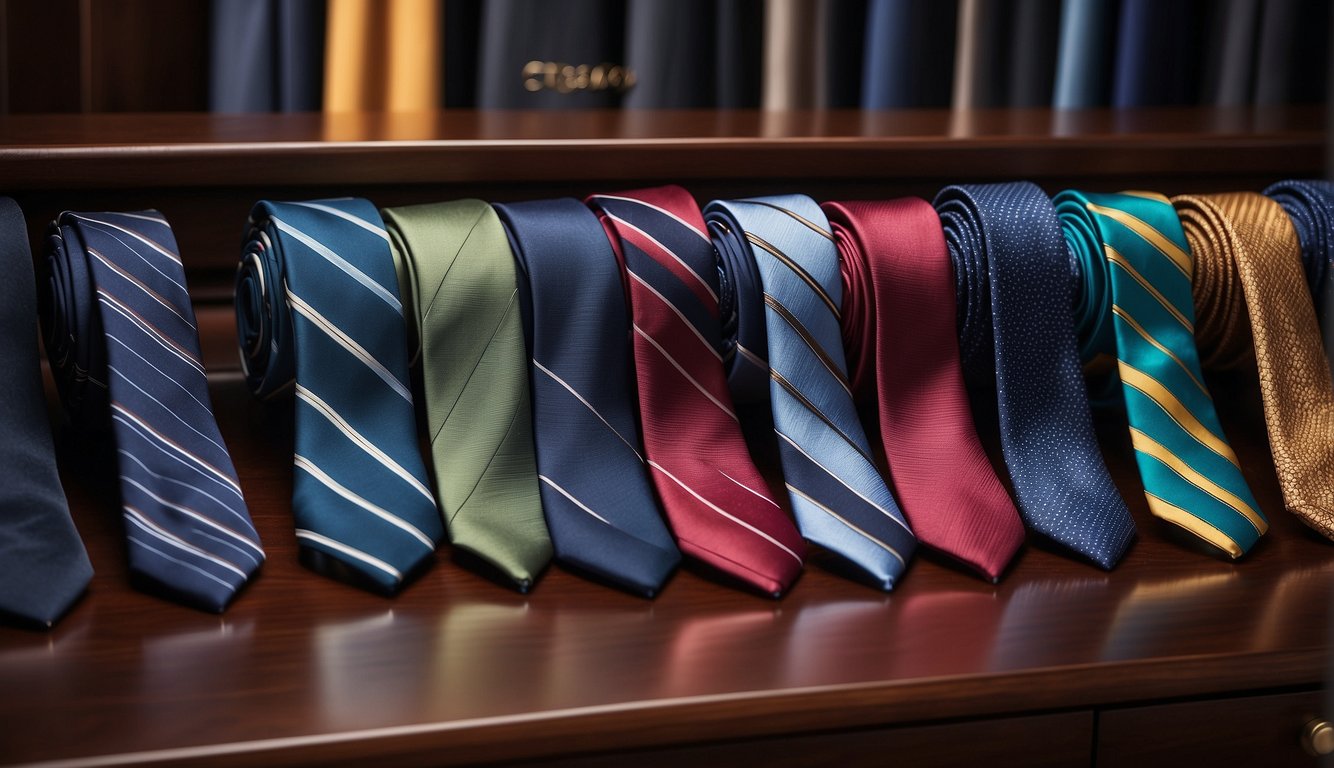
Regarding the final elements of suit-wearing, I believe the tie is the centerpiece that brings everything together, while accessories like dress socks and suspenders add subtle flair and ensure a polished look.
Tying the Knot
I find the Windsor knot to be a stellar choice for most occasions due to its symmetrical and wide appearance, which complements a variety of collar styles. Here’s my method for tying this distinguished knot:
- Start with the wide end of your tie on the right and extend it about 12 inches below the narrow end.
- Cross the wide end over the narrow end and bring it up through the loop between the collar and the tie.
- Bring the wide end back down, go underneath the narrow end to the right, then back through the loop and to the right again so that the wide end is inside out.
- Bring the wide end across the front from right to left.
- Pull the wide end up through the loop again.
- Bring the wide end down through the knot in front and tighten the knot by sliding it up with both hands.
I go for a bow tie when I’m in the mood for something less formal or more unique. It brings a certain charm and a dash of personality, especially suited for events like weddings or gala dinners.
Dress Socks and Suspenders
Choosing the right dress socks is crucial for my comfort and style. I always ensure they are long enough, at least mid-calf length, so they don’t slide down and expose my skin when I sit. Subtly matching them with my tie or suit can add a consistent theme to my attire.
Suspenders, or braces as some may call them, offer a classic alternative to belts. Not only do they keep my trousers perfectly positioned, but they contribute to a very sharp and distinctive look when I choose the right color and style.
- Tip: I always pick suspenders that anchor with buttons rather than clips for a more refined and secure attachment.
Remember, details like these can set a well-dressed man apart in any professional or formal setting.
Maintenance and Care

Maintaining a suit is crucial for its longevity and preserving that crisp appearance. A well-cared-for suit can be a staple in my wardrobe for years and reflects my appreciation for custom tailoring.
Proper Storage and Cleaning
Storage: I always make sure to hang my suits on sturdy, wooden hangers that support the shoulders properly. This keeps the suit’s shape intact and prevents any unwanted wrinkles. Garment bags come in handy to protect the suit from dust and moths, particularly if I store it for an extended period.
Cleaning: Contrary to what one might think, suits don’t need to be cleaned after every wear. In fact, frequent cleaning can shorten their lifespan. When my suit does need freshening up, I use a soft brush to remove any dust or dirt, and I’ll spot clean any stains carefully or take the suit to a tailor if necessary. The suit should only be dry cleaned when absolutely essential since the chemicals used can be harsh on the fabric.
Special Occasions
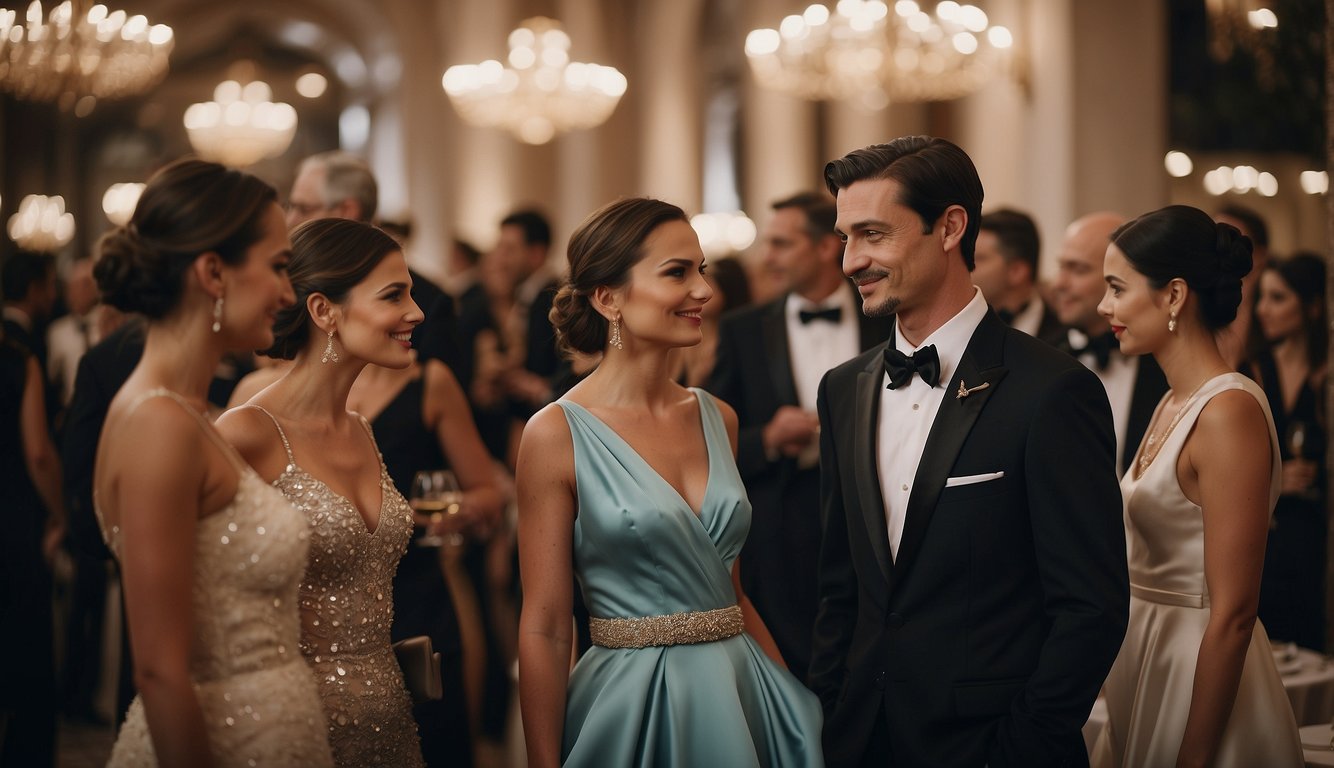
When attending special occasions, selecting a suit that matches the event’s significance is vital. My choices in fabric, style, and accessories can greatly impact my presentation and the respect I show for the occasion.
Suit Etiquette for Weddings
At weddings, I always aim for elegance. I find that a bespoke suit best reflects the formality and personalization of such a significant day. I opt for high-quality fabrics and a fit that is tailored precisely to my measurements. I navigate towards classic colors like navy or charcoal, unless it’s a casual summertime wedding where lighter shades can be stunning.
For a touch of rakish flair, I consider accessorizing with a tasteful pocket square or a unique tie that complements the wedding’s color scheme. However, I’m careful never to outshine the wedding party, always remembering that my ensemble should celebrate the event rather than divert attention.
Themes like Americana can inspire my choice of suit for a wedding with a more rustic or country setting. In this case, I might pair a well-fitted blazer with chinos and a checked shirt, ensuring that my look is smart yet in keeping with the day’s vibe.
Common Mistakes
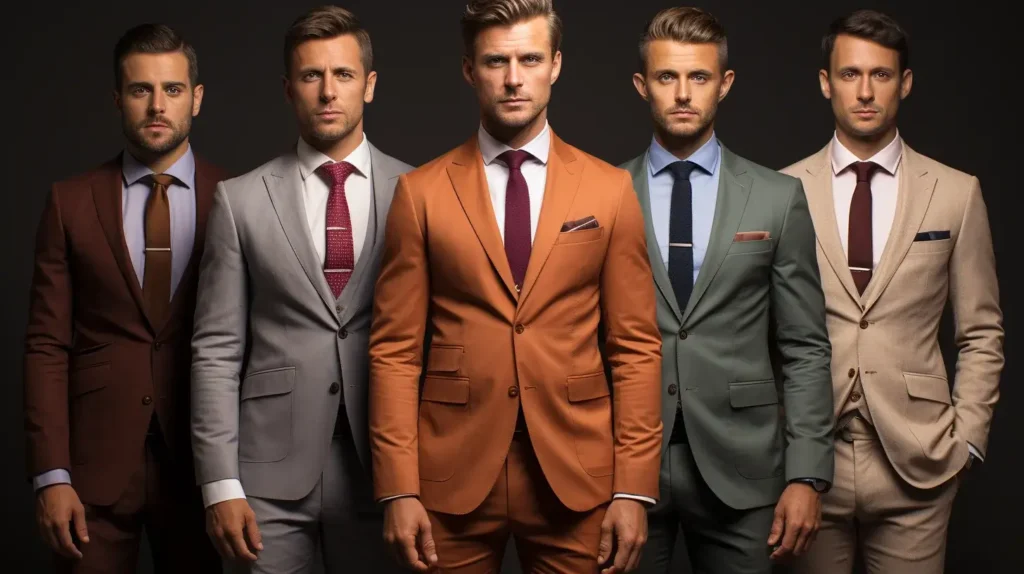
In my experience, dressing sharp in a suit is as much about avoiding missteps as it is about nailing the style. It’s important to steer clear of certain fashion faux pas to maintain a polished look.
Avoiding Fashion Faux Pas
- Shirt and Tie Mismatch: The basic rule for shirt and tie combinations is to balance patterns and colors for a cohesive look. A striped shirt can be great with a solid tie, and remember to ensure that the color complements rather than clashes.
- Leaving Stitching Intact: Fresh off the rack suits come with tack stitching, which should be removed. The tack stitching is often found on jacket vents and pockets, and is meant to keep the suit in shape during transportation, not to be worn.
- Incorrect Buttoning: Always remember the simple rule for suit buttons – “sometimes, always, never”. If I have a three-buttoned suit jacket, I’ll sometimes button the top, always button the middle, and never button the last one. The bottom button should remain undone to allow for better movement and shape.
- Shirt Buttons Popping Open: I ensure my shirt is the correct size to prevent any strain that causes the buttons to pop open. The shirt needs to fit comfortably around my chest, and I should be able to move freely without it pulling apart.
FAQ – Suit Etiquette
When is it appropriate to wear a suit?
Suits are traditionally worn for formal occasions, business settings, and events where a smart dress code is required. These can include weddings, funerals, job interviews, formal dinners, and certain workplaces. Understanding the dress code of an event or the culture of a workplace is key.
Should the bottom button of a suit jacket be fastened?
The general rule for suit jackets is “sometimes, always, never” – if your jacket has three buttons, you can sometimes fasten the top, always fasten the middle, and never fasten the bottom. For two-button suits, fasten the top button but not the bottom. Single-button suits should, of course, always have that button fastened when standing.
What’s the proper way to wear a pocket square?
A pocket square adds a touch of elegance to a suit. It should complement the tie or shirt but not match it exactly. The pocket square can be folded in various ways, from a simple straight fold to more elaborate designs, depending on the formality of the occasion.
If you enjoyed reading about Suit Etiquette, check out our other articles:
- Bowling Etiquette 2024: Tips for Polite Play on the Lanes
- Surf Etiquette 2024: Key Rules for Sharing the Waves
- Tennis Etiquette 2024: Key Rules and Polite Play for Beginners
- Laundromat Etiquette 2024: Tips for a Harmonious Wash Day
Feel free to also check out our other Articles from the category “Etiquette & Manners“ and don’t forget to follow us on Pinterest.
